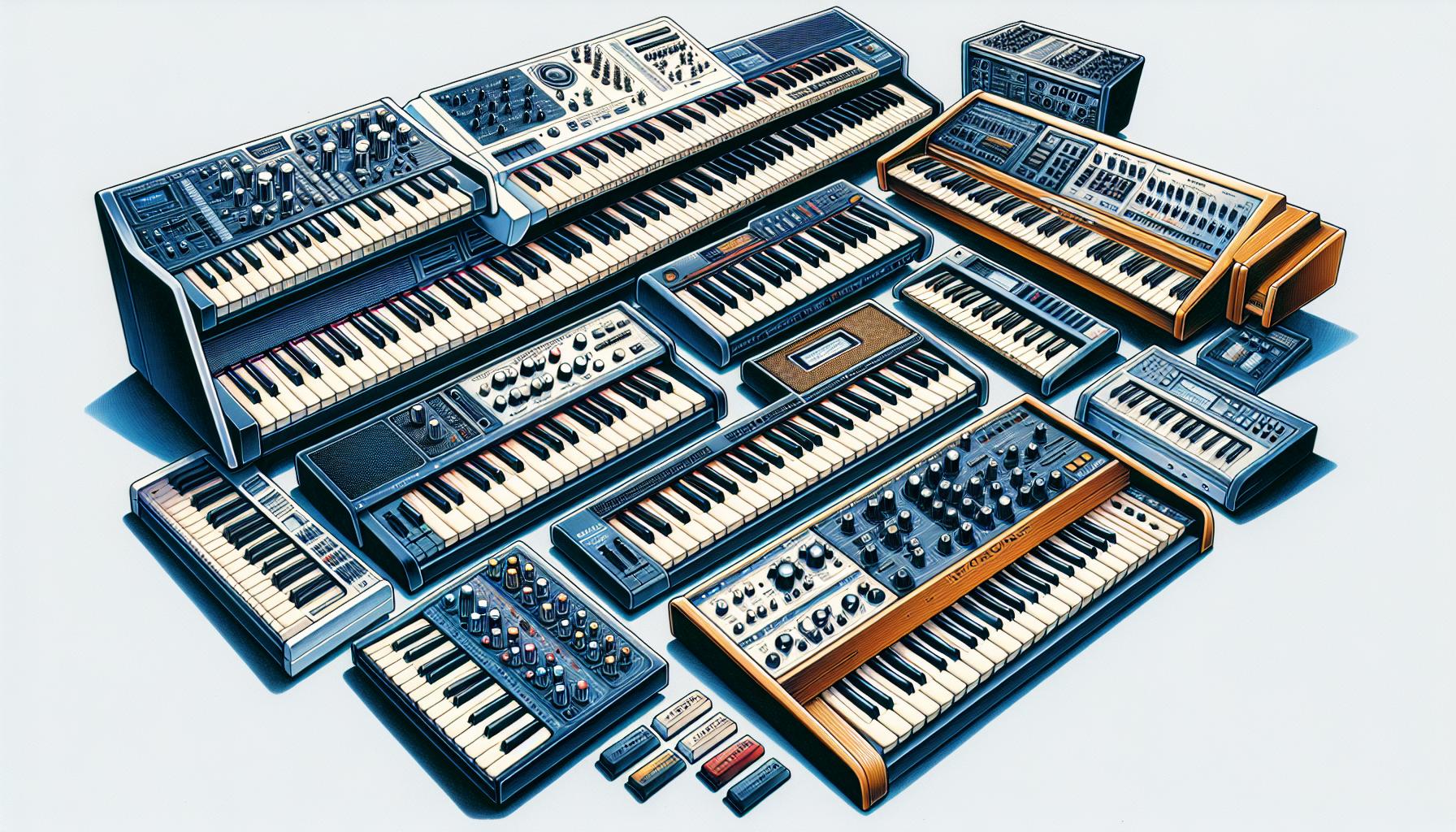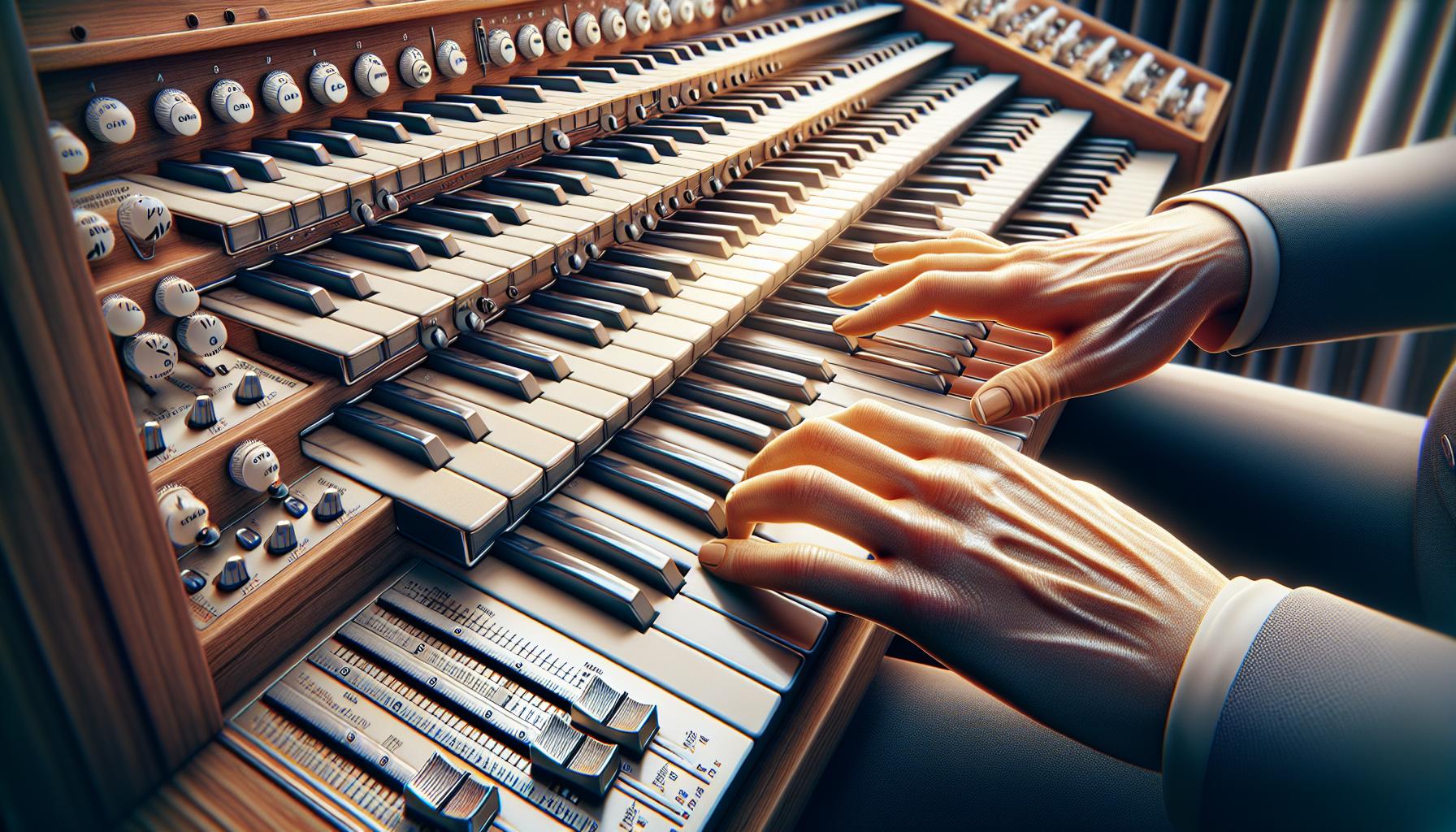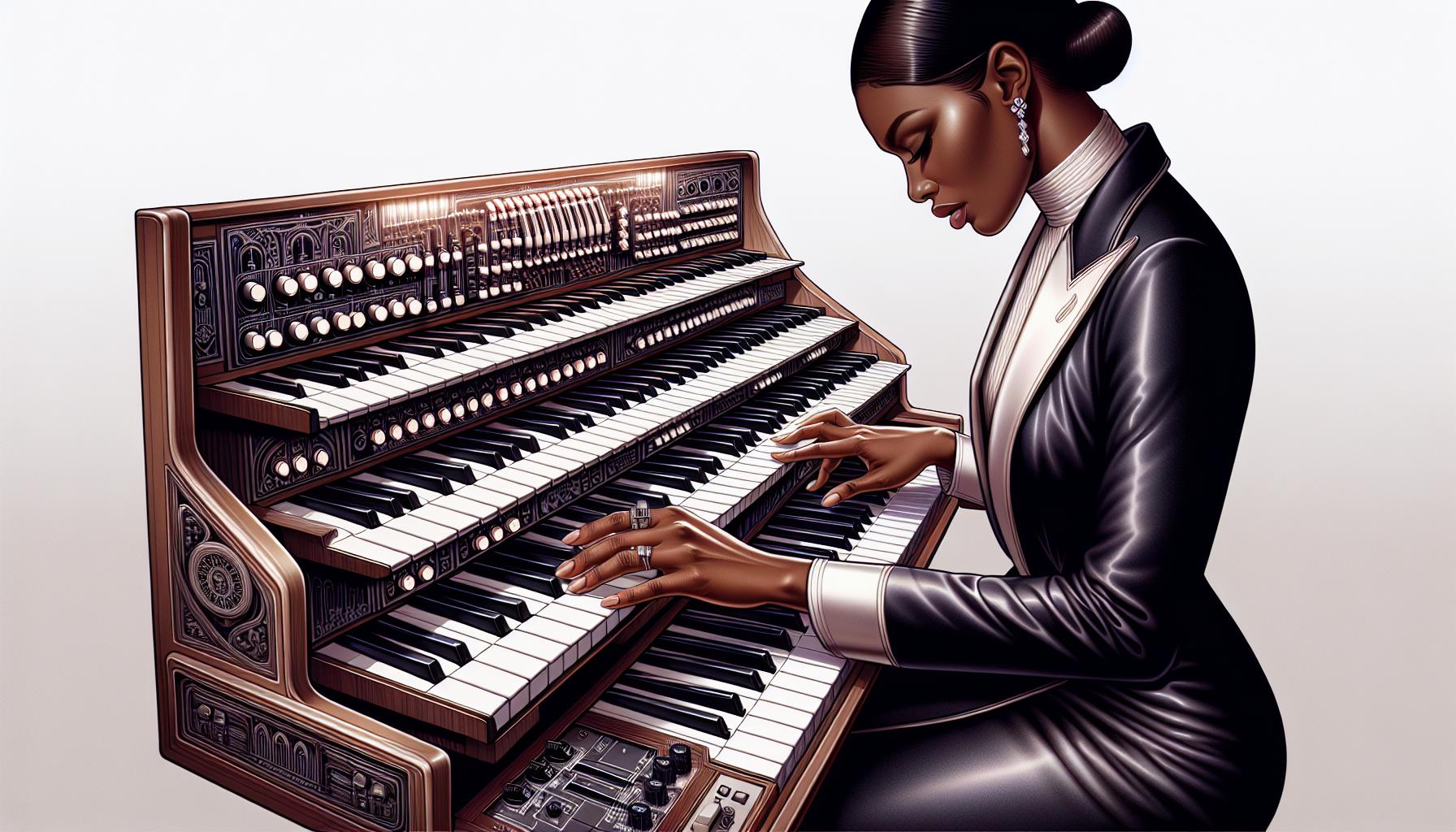Finding the perfect keyboard that nails those lush, swirling organ sounds can feel like a quest for the Holy Grail for many musicians. Whether you're channeling the soulful vibes of a gospel choir or the psychedelic swirls of progressive rock, the right keyboard can elevate your music to new heights.
Thankfully, the market is brimming with options that cater to the needs of organ enthusiasts. From authentic Hammond emulations to innovative digital models that push the boundaries of sound, there's something for everyone. Let's dive into what makes a keyboard stand out in the world of organ sounds.
Understanding the importance of organ sounds in music
The rich, vibrant tones of the organ have been a cornerstone in various music genres for decades, from the haunting echoes in gothic symphonies to the jazzy vibes resonating in smoke-filled clubs. This versatility is what makes organ sounds so crucial in music. They don't just fill the air with melody; they evoke emotions, create atmospheres, and, most importantly, lay down the foundation upon which many songs are built.
In rock music, the organ’s swirling sounds have powered iconic tracks, offering a sonic depth that guitars alone cannot achieve. Bands like The Doors and Deep Purple harnessed the organ's power to craft unforgettable riffs that still resonate with audiences today. Similarly, gospel music relies heavily on the organ to provide both melodic and harmonic support. The instrument's capacity to convey a wide range of feelings, from uplifting joy to profound sorrow, makes it indispensable in these settings.
Yet, the importance of organ sounds goes beyond traditional uses. In modern music production, sampling and digital emulation of organ tones have found their way into hip hop, EDM, and indie tracks. The incorporation of these sounds demonstrates how the timbre of the organ can add layers and texture, enriching the sonic palette.
To truly appreciate the organ's role in music, one must also recognize the technological advancements that have made organ sounds more accessible to musicians across the globe. From bulky, air-driven pipe organs to portable, digital keyboards that mimic the Hammond's warmth and Leslie speaker's distinctive modulation, technology has played a pivotal role. This evolution has not only preserved the organ's legacy but has also paved the way for innovative musical explorations.
Furthermore, the dynamics and expression achievable on a good keyboard with organ sounds are unmatched. Musicians can manipulate drawbars, use effects like reverb and overdrive, and control the rotary speaker speed to create a performance that's both mesmerizing and deeply personal. This level of control allows for a direct connection between the artist and their instrument, making live performances particularly electrifying.
- The organ's versatility makes it a vital element across various music genres.
- Technological advancements have made organ sounds more accessible to a wider range of musicians.
- The ability to manipulate organ sounds on a keyboard allows for expressive and dynamic performances.
Popular keyboard brands known for their organ sound quality

When it comes to keyboards that offer top-notch organ sounds, several brands have carved out a name for themselves in the music industry. These brands are acclaimed not just for their high-quality sound but also for the variety of organ voices they provide, catering to genres that range from rock and gospel to jazz and electronic music.
Nord stands out prominently in the list of brands celebrated for their organ sounds. Musicians often praise Nord keyboards for their meticulous emulation of both vintage and modern organ models. The Nord C2D, for instance, offers exceptional B3 tone wheel organ simulations, alongside baroque pipe organ voices, making it a favorite for both classical performers and touring bands.
Yamaha is another heavyweight in the realm of keyboards with stellar organ sounds. The Yamaha Reface YC model is well-regarded for its versatility, providing five vintage organ sounds in a compact, highly portable unit. Featuring rotary speaker emulation and vibrato/chorus effects, this keyboard allows musicians to explore a wide range of organ tones, from mellow and smooth to robust and gritty.
Roland has also made significant contributions with its VK and V-Combo series. Roland keyboards are known for their Virtual Tone Wheel technology, which accurately reproduces the complex sound of a tone wheel organ. Their inclusion of physical drawbars in some models offers players tactile control over their sound, enhancing the authenticity of the organ playing experience.
Hammond, the brand synonymous with the classic sound of the rock and gospel organ, continues to influence the design and development of modern keyboards. The Hammond SK series successfully bridges the gap between the legendary sound of the Hammond B3 and the demands of contemporary music production. By incorporating both traditional elements like mechanical drawbars and modern features such as digital Leslie effects, Hammond keyboards remain a top choice for professional organists.
Here's a quick comparison of some notable models:
| Brand | Model | Notable Features |
|---|---|---|
| Nord | C2D | B3 tone wheel organ simulation, baroque pipe organ sounds |
| Yamaha | Reface YC | Five vintage organ sounds, highly portable |
| Roland | V-Combo VR-09 | Virtual Tone Wheel technology, physical drawbars |
| Hammond | SK Series | Mechanical drawbars, digital Leslie effects |
Key features to look for in a keyboard for organ enthusiasts

When diving into the world of keyboards to find the perfect organ sound, there are several key features that organ enthusiasts should pay close attention to. The depth and realism of the organ sound, the variety of organ types available, and the quality of built-in speakers or outputs are paramount. Additionally, the ability to customize and manipulate these sounds to suit one's musical style can significantly enhance the playing experience.
Authentic Organ Sounds
The cornerstone for any keyboard aiming to satisfy organ enthusiasts is the authenticity of its organ sounds. High-quality keyboards offer a range of organ sounds from vintage tones reminiscent of a Hammond B3 to the modern, crisp sounds of a digital church organ. It's vital that these sounds are meticulously sampled or emulated to deliver the warmth and richness characteristic of traditional organs.
Variety of Organ Voices
A keyboard that boasts a variety of organ voices provides musicians with the flexibility to explore different genres. Nord and Yamaha are among the brands that offer keyboards with multiple organ models, allowing users to switch effortlessly between jazz, rock, gospel, and classical music styles. Look for keyboards that include:
- Hammond-style drawbar organs
- Theater organs
- Pipe organs
- Electronic organs
Customization and Control
For those looking to dive deeper into their sound, the ability to customize and control the organ's voice is crucial. Keyboards equipped with physical drawbars or virtual sliders enable musicians to shape their tone in real-time. Additional controls for percussion, vibrato, and chorus effects, as well as the ability to adjust key click and leakage levels, make it possible to recreate the nuanced sound of a vintage organ or design something entirely new.
Connectivity and Expansion
In today's digital age, connectivity is key. Keyboards that offer USB or MIDI connections make it easy to integrate with computers and other digital equipment, opening up a world of recording and sound editing possibilities. Expansion slots for sound libraries allow organ enthusiasts to continually update and expand their repertoire of organ sounds, keeping their music fresh and engaging.
Exploring different types of organ sounds available in keyboards

When diving into the world of keyboards that offer exceptional organ sounds, it's essential to understand the variety of organ voices they can produce. Each type of organ sound offers a unique flavor and character, suitable for different musical genres and settings.
Hammond-Style Drawbar Organs
One of the most sought-after organ sounds in keyboards is the Hammond-style drawbar organ. This voice is iconic in genres ranging from jazz and gospel to rock and blues. The drawbar system allows players to sculpt their sound in real-time, offering a hands-on approach to tone customization. These organ sounds are known for their rich, warm tones and the characteristic rotary speaker effect, which can be emulated in many keyboards to give players that authentic swirling sound.
Pipe Organs
Another important organ voice found in keyboards is the pipe organ sound. Pipe organs are synonymous with classical music and liturgical settings, producing a majestic and grandiose sound that can fill massive spaces. Keyboards that include high-quality pipe organ samples can transport players to a cathedral setting, allowing them to create intricate polyphonic compositions with the lush, layered sounds of large pipe organs.
Theatre Organs
Theatre organs come equipped with a wide range of unique sounds and effects designed for silent film accompaniment. This type of organ voice in keyboards can recreate the whimsical and versatile sounds of the theater organ, including tuned percussions and special effects. Players fascinated by the nostalgic and expressive quality of theatre organs will find these sounds perfect for creating mood and atmosphere in their performances.
Digital & Synthesized Organs
Advancements in digital technology have introduced a wave of digital and synthesized organ sounds. These organs aren't trying to emulate traditional organs faithfully but instead offer a new palette of sounds. From ethereal pads and aggressive synth leads to mellow ambient textures, digital organs open up a world of creative possibilities for composers and performers looking for something beyond the classical organ repertoire.
Moreover, the ability to layer these organ sounds with other instrument voices or effects within a keyboard can lead to the creation of unique sonic landscapes, further showcasing the versatility and range of modern keyboards.
Tips for optimizing and customizing organ sounds on your keyboard

Optimizing and customizing organ sounds on a keyboard can transform any performance from good to unforgettable. With just a few adjustments and creative tweaks, keyboardists can breathe new life into the classic organ tones that have captivated audiences for decades. Here’s how one can take those organ sounds to the next level.
Understanding Your Instrument’s Capabilities
Before diving into customization, it's crucial to understand what your keyboard can do. Not all keyboards are created equal, and some offer more in-depth options for sound customization than others. Familiarize yourself with your instrument’s range of organ sounds and any built-in effects that can alter those sounds. This could include reverb, chorus, or rotary speaker simulations, which can significantly impact the organ’s tone.
Utilizing Drawbars or Virtual Drawbars
For those keyboards equipped with physical or virtual drawbars, these are your best tools for shaping the organ sound. Drawbars allow you to mix and match different harmonic components, creating a wide array of organ tones. Experimenting with different drawbar settings can yield anything from a full, rich sound suitable for gospel music to a sharper, more cutting tone for rock or jazz. It’s all about finding the right balance that fits the music you’re playing.
Experimenting With Effects
Effects can dramatically change the character of your organ sounds. Reverb can add depth and space, making the organ sound more majestic or ethereal. Chorus effects can thicken the sound and provide a gentle motion to the tone, while overdrive or distortion can add grit and edge, perfect for rock organs. Even if your keyboard doesn’t have many effects built-in, external effect pedals or software can be used to expand your sonic palette.
Layering Sounds
One of the advantages of modern keyboards is the ability to layer sounds. Combining organ sounds with strings, brass, or other keyboard tones can create rich, complex textures. This can be particularly effective in a live setting, where you’re looking to fill the space with sound. Layering can also involve splitting the keyboard so that different sounds can be played with each hand, offering even more versatility in performance.
Conclusion
Exploring the full range of your keyboard's organ sounds can truly transform your music. By diving into the nuances of effects like reverb and chorus, and getting hands-on with features like drawbars, you're not just playing; you're sculpting sound. Remember, layering these sounds with other instruments opens up a world of texture and depth that can elevate any performance. So go ahead, experiment, and let your creativity lead the way to unforgettable organ tones.
Harlan Kilstein began playing piano during covid with no piano background at all. He taught himself how to play learning what to do and what not to do.
Today he's an advanced intermediate player and can help you grow in your skills because he learned all this on his own.








